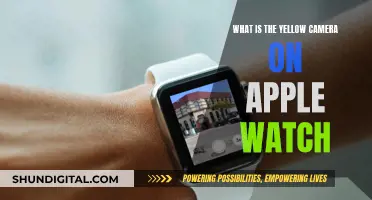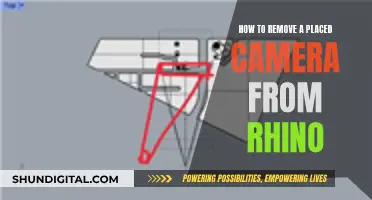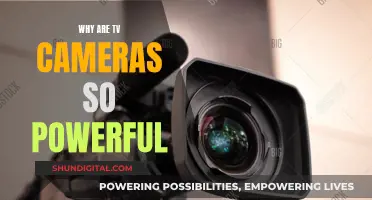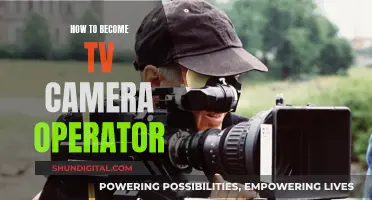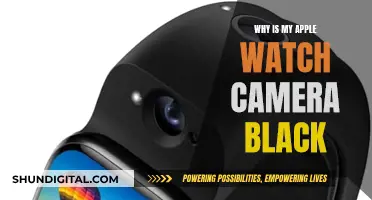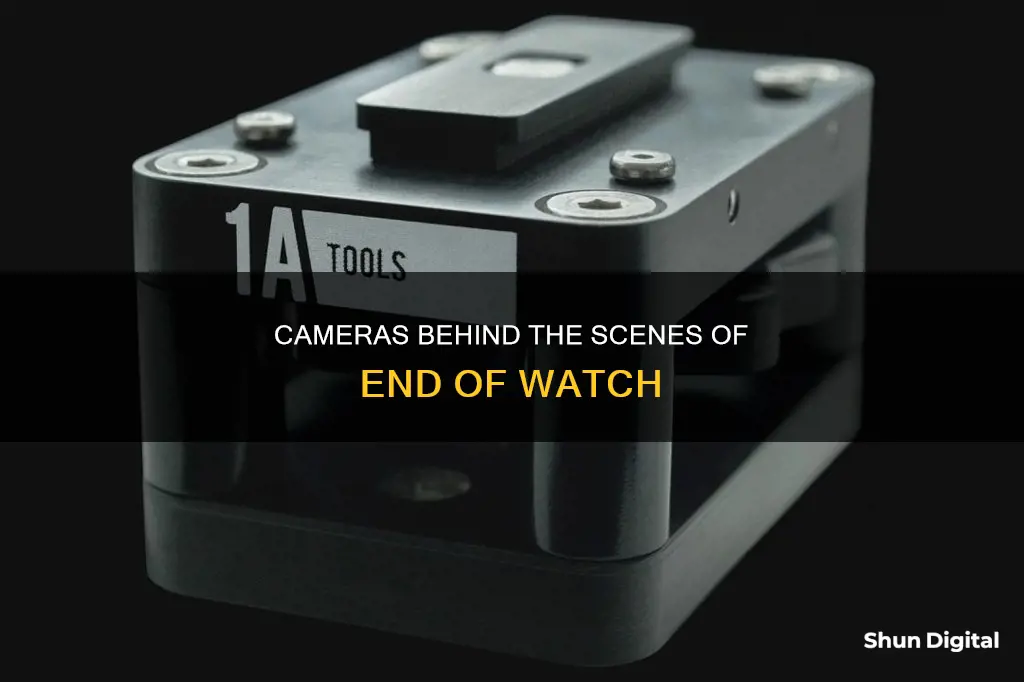
The 2012 American action thriller film End of Watch, written and directed by David Ayer, was shot using a combination of found footage style and traditional photography. The film was shot using a variety of cameras, including the Canon EOS-5D Mark II, Canon EOS-7D, Canon XA10, GoPro HD Hero, Silicon Imaging SI-2K Mini, and Silicon Imaging SI-2K Nano. Cinematographer Roman Vasyanov worked closely with technicians at Radiant Images to develop a palm-sized cinema-quality camera, the SI-2K Nano, specifically for the film's unique POV shots. Most scenes were captured by four cameras simultaneously, including a handheld camera operated by actor Jake Gyllenhaal, cameras clipped to Gyllenhaal and co-star Michael Peña's vests, and dashboard footage from their patrol car.
| Characteristics | Values |
|---|---|
| Release date | 2012 |
| Director | David Ayer |
| Cinematographer | Roman Vasyanov |
| Editing | Dody Dorn |
| Camera | Canon EOS-5D Mark II |
| Canon EOS-7D | |
| Canon XA10 | |
| GoPro HD Hero | |
| Silicon Imaging SI-2K Mini | |
| Silicon Imaging SI-2K Nano | |
| Canon Lenses | |
| Zeiss Ultra 16 Lenses | |
| Zeiss Ultra Prime Lenses | |
| SI-2K Nano (worn by actors Jake Gyllenhaal and Michael Pena for POV shots) |
What You'll Learn
- The SI-2K Nano camera was conceived, developed and used specifically for End of Watch
- The Canon EOS-5D Mark II, Canon EOS-7D, and Canon XA10 were also used
- As were the GoPro HD Hero, Silicon Imaging SI-2K Mini, and Zeiss Ultra 16 lenses
- Gyllenhaal and Pena wore the SI-2K Nano on their chests for POV shots
- Cinematographer Roman Vasyanov also credited the two actors for quickly adapting to their dual roles

The SI-2K Nano camera was conceived, developed and used specifically for End of Watch
The SI-2K Nano camera was designed to be small enough to be worn by lead actors Jake Gyllenhaal and Michael Pena for POV shots without restricting their movement. It was also mounted as a dashboard cam inside a real squad car to capture interaction in a realistic way. The camera is one-third the size of the original SI-2K Mini Sensor and has the versatility to be mounted on just about anyone or anything. It shoots 2K uncompressed RAW 4:4:4 cinema quality using SI sensor components with 10 stops of dynamic range.
The development of the SI-2K Nano camera was a collaboration between Radiant Images and the Mansouri brothers, who had previously worked with the company on the acclaimed film 127 Hours. When the desired camera could not be found on the market, Babak Mansouri decided to design it himself. He envisioned a camera that was significantly smaller than the Silicon Imaging’s SI-2K camera, with a dedicated C-mount lens and a single soft-ribbon style cable extending from the body.
The SI-2K Nano camera was unveiled in Radiant’s booth at the Cine Gear Expo in June 2011 and proved to be the perfect solution for the filmmakers of End of Watch. The tiny and versatile camera enabled them to create a sense of urgency and something fresh for viewers, bringing them up close to the lives, friendship and daily work of the two police officers at the centre of the film.
Mobile Cameras and Solar Eclipse: Safe or Not?
You may want to see also

The Canon EOS-5D Mark II, Canon EOS-7D, and Canon XA10 were also used
Radiant Images supplied a range of digital cameras for the production, including the Canon 5D, GoPro, and RED Epic. The Canon EOS-5D Mark II, Canon EOS-7D, and Canon XA10 were likely chosen for their ability to capture high-quality images and video footage. These cameras would have been well-suited to the film's fast-paced and intense scenes, providing clear and detailed visuals to enhance the viewing experience.
The Canon EOS-5D Mark II is a full-frame DSLR camera known for its excellent image quality and low-light performance. It can capture full HD video and has a wide range of lenses available, making it a versatile option for filmmakers. The Canon EOS-7D is also a powerful DSLR camera, offering high-resolution images and video with quick and accurate autofocus. This camera is often favoured for its durability and ability to capture fast-action sequences.
The Canon XA10, on the other hand, is a compact professional camcorder. It features a 10x optical zoom lens, providing flexibility in framing shots, and is capable of capturing clear, stabilised footage even in low-light conditions. This camera's compact size and ease of use likely contributed to its selection for certain scenes in the film.
The choice of these Canon cameras reflects the production's emphasis on visual intimacy and realism. By utilising a range of camera options, including the SI-2K Nano, GoPro, and Canon models, the filmmakers were able to capture the action from various perspectives and create a sense of urgency and freshness for the viewers.
Galaxy Watch: Camera Functionality Explored
You may want to see also

As were the GoPro HD Hero, Silicon Imaging SI-2K Mini, and Zeiss Ultra 16 lenses
The 2012 film End of Watch was shot using a variety of cameras, including the GoPro HD Hero, Silicon Imaging SI-2K Mini, and Zeiss Ultra 16 lenses. The film's unique look and feel were achieved through a collaboration between the LA-based rental house and digital cinema innovator Radiant Images, and the filmmakers. Radiant Images worked closely with the director, David Ayer, and cinematographer, Roman Vasyanov, in pre-production to enable the POV and other small camera shots that are at the movie's core.
The GoPro HD Hero is a small, versatile action camera capable of capturing high-definition footage. It was likely chosen for its durability, portability, and ability to capture immersive, POV-style footage. The Silicon Imaging SI-2K Mini is another compact and versatile camera that shoots 2K uncompressed RAW cinema-quality footage. This camera's small size and image quality made it a suitable choice for the intimate, POV-style shots that Ayer wanted.
The Zeiss Ultra 16 lenses provided high-quality optics, offering exceptional image clarity and low-light performance. These lenses are designed for Super 16mm film cameras and provide a unique look with their characteristic depth of field and bokeh. The combination of these cameras and lenses allowed the filmmakers to achieve the desired visual style and capture intimate, realistic footage that reflected the "visual environment" of the time.
The use of these specific cameras and lenses contributed to the film's overall aesthetic and helped create a sense of urgency and freshness for the viewers. The small form factors of the GoPro and SI-2K Mini, in particular, enabled the filmmakers to get extremely close to the action and capture intimate, POV-style footage of the characters' daily lives and work. This approach immersed the audience in the world of the characters, enhancing the impact of the story and contributing to the success of the film.
Activating Your Apple Watch Camera: A Simple Guide
You may want to see also

Gyllenhaal and Pena wore the SI-2K Nano on their chests for POV shots
The 2012 film End of Watch, starring Jake Gyllenhaal and Michael Peña, was shot using a variety of cameras, including the Canon EOS-5D Mark II, Canon EOS-7D, Canon XA10, GoPro HD Hero, Silicon Imaging SI-2K Mini, and Silicon Imaging SI-2K Nano.
The SI-2K Nano was designed specifically for the film by Radiant Images, an LA-based rental house and digital cinema innovator. Radiant Images worked closely with the filmmakers in pre-production to enable the POV and other small camera shots that were central to the film's unique look and feel.
The SI-2K Nano is a palm-sized cinema-quality camera that was small enough to be worn by the lead actors, Gyllenhaal and Pena, for POV shots without restricting their movement. For these shots, Gyllenhaal and Pena wore the SI-2K Nano on their chests, with straps that mounted the camera in the middle of their chests. They also wore monitors that allowed them to see their movements. This required the actors to adapt to the dual roles of actor and cameraman, especially during action scenes, where they had to run and move with the cameras while also capturing the action.
The small size and versatility of the SI-2K Nano allowed the filmmakers to create a sense of visual intimacy and urgency, putting the viewer right in the middle of the action. The camera was also mounted as a dashboard cam inside a real squad car to capture interactions in a realistic way. The SI-2K Nano was instrumental in achieving the film's unique visual style and POV shots, which were central to the director's vision of getting the audience up close to the lives and daily work of the two police officers portrayed in the film.
Amazon's Employee Surveillance: Cameras in the Workplace?
You may want to see also

Cinematographer Roman Vasyanov also credited the two actors for quickly adapting to their dual roles
Cinematographer Roman Vasyanov credited actors Jake Gyllenhaal and Michael Peña for quickly adapting to their dual roles as actors and camera operators. In the film End of Watch, Gyllenhaal and Peña wore straps that mounted a SI-2K Nano camera to their chests for many of the POV shots. This required them to run and move with the cameras while also ensuring they were capturing the action. Vasyanov likened the process to "a ballet".
The SI-2K Nano camera was developed by Radiant Images specifically for End of Watch. The filmmakers wanted to find a small, cinema-quality camera that could be worn by the lead actors for POV shots without restricting their movement. The camera also needed to be mountable as dashboard cams inside a real squad car to capture interactions in a realistic way.
To achieve this, Radiant Images technicians worked closely with the filmmakers in pre-production to enable the POV and other small camera shots that were central to the film's unique look and feel. The SI-2K Nano camera is one-third the size of the original SI-2K Mini Sensor and can be mounted to almost anyone or anything. It shoots 2K uncompressed RAW 4:4:4 cinema-quality footage using SI sensor components with 10 stops of dynamic range.
In addition to the SI-2K Nano, Radiant Images supplied a range of other digital cameras to the production, including the Canon 5D, the GoPro, and the RED Epic. The film's unique visual style was designed to reflect the "visual environment" of today's society, influenced by the popularity of YouTube and the proliferation of GoPro and other handheld cameras for POV footage. Vasyanov wanted to present this style in a "better quality way" with End of Watch.
Cromebook Camera: Is Your Privacy at Risk?
You may want to see also
Frequently asked questions
End of Watch was shot on a variety of cameras, including the Canon EOS-5D Mark II, Canon EOS-7D, Canon XA10, GoPro HD Hero, Silicon Imaging SI-2K Mini, and Silicon Imaging SI-2K Nano.
Cinematographer Roman Vasyanov worked with director David Ayer to create the unique look and feel of End of Watch.
To achieve the POV shots, Radiant Images developed a palm-sized cinema-quality camera, the SI-2K Nano, which was small enough to be worn by the lead actors without restricting their movement.
In addition to the SI-2K Nano, Radiant Images supplied a range of digital cameras, including the Canon 5D, the GoPro, and the RED Epic.


